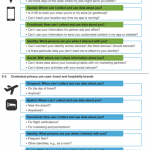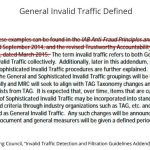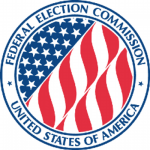How GDPR Will Change the Demand Gen Funnel…For The Better
— February 2, 2018

tortic84 / Pixabay
The next few months will test the boundaries of change management for marketing organizations (and their colleagues in sales, finance, IT and legal) as they ready their teams for the General Data Protection Regulation (GDPR) going into effect May 2018 in the European Union.
Much of what we’ve seen in B2B marketing publications, martech vendor blogs and from word-of-mouth borders on fear-mongering. Not to say this isn’t understandable – a lot of rather quick changes must be made and they can feel overwhelming.
However, some of the wisest B2B marketing experts I know keep reiterating one very important point: GDPR, while causing some stress now, will lead to more efficient and effective marketing and sales down the road.
Annalisa Church, Sr. Director of Marketing Technology at Akamai Technologies, explains it well:
“GDPR is forcing us to renew our focus on lead quality vs. quantity – and that’s great for the industry. In effect, it’s going to force marketing orgs to prune their databases so they can focus their skills, resources and time on legitimately interested prospects. It’s a great opportunity to get rid of waste earlier and be smarter about who you focus on.”
Diving deeper on Annalisa’s point, it’s helpful to put it in the context of the changes to the demand generation funnel. Here’s a few GDPR silver linings and nuances that have mostly been neglected.
Fewer leads, yes…but they’re the leads you actually want
Your database will undoubtedly get smaller. Changing your landing page lead-capture processes from opt-outs to specific opt-in language will net you fewer contacts. However, if an individual doesn’t want to opt into receiving information from you, you shouldn’t want to force your content on them anyway – it’s just as much a waste of your time and resources as it is theirs.
Here’s an analogy: Say you’re single and at your local hangout; it’s packed with a variety of prospective partners. But you’re also looking for a someone who shares your interest in the New England Patriots (good luck with that).
Now you must have all these small-talk discussions with a bunch of different individuals to find out who’s as mentally disturbed as you and supports the Pats. Wouldn’t it be much better if all the non-Pat’s fans were filtered out at the door? You wouldn’t waste all your time and drain your conversation tank.
This is the potential of GDPR for revenue marketing, when applied to your data privacy and management approach. It’ll constrict the top of the funnel, but you’ll see better conversions down-funnel. As marketers, we’ll take fewer top-funnel leads for more sales-qualified leads (SQLs) and pipeline opportunities any day.
Let’s look at how this specifically affects various stages of the funnel.
How a constricted top funnel will affect demand gen efforts
Undoubtedly, GDPR will require greater discipline among top-funnel demand gen efforts. The old shotgun approach of one piece of engagement content for all personas (which as much as we like to say has passed, remains a very common practice) will be replaced by more nuanced tactics: a greater number of highly specific personas, more targeted engagement tactics, a greater selection of content created for each persona dependent on various opt-in objectives, a broader variety of channels and lead sources to reach these niche audiences and hit your lead and/or pipeline goals, etc.
Marketers will need to give far more attention to how they get new contacts into the database. However, once they’re in, efficiency and performance will go up. Here’s why…
Better prospect and program data results in greater demand gen efficacy
With prospects in large part qualifying themselves by opting in, demand generation marketers can focus on winning over a more finite universe of prospects. This will present some initial drawbacks, but will eventually lead to big gains.
Bad news first
GDPR will make it much easier for prospects to opt out of the database. This means you’ll need to expertly hone your messaging frequency and personalization, lest you’ll see your funnel bleeding out the sides, which won’t look good in the funnel performance reports presented to the c-suite and upper marketing management.
The good news…a shift to the metrics that matter
GDPR is a great reason to shift from outdated top-funnel lead volume goals to more important down-funnel metrics. Sure, the c-suite knows that pipeline opportunities are more important than lead volume. But for most B2B marketing teams, as soon as lead volume drops, a moment of panic from management is forthcoming.
This means demand gen teams traditionally have been on the hook for two metrics that aren’t necessarily connected: top-funnel lead volume on the one hand, and lead quality on the other. The GDPR’s mandates provide a great reason to drop the first to focus on the latter. You won’t waste cycles duplicating efforts that may have helped you hit your lead volume goals, but never converted to sales pipeline or revenue.
…and better prospect data
The fact that GDPR requires opt-ins for each specific use of data will translate to a clearer understanding of prospect needs – that is to say, more specific, accurate lead data with which marketers can further qualify, nurture and convert prospects into opportunities.
…and improved marketing program transparency
Further, these barriers to funnel entry act as a filtration device; your database will no longer be muddied by all the so-called lead data that traditionally have flooded your marketing automation and CRM systems and skewed your program measurement, analysis and optimization.
This cleaner database will provide you with a better understanding of which messaging, content and channels are resonating with which personas, and creating legitimate interest among your target audiences. And your team won’t need to spend all the time validating and scrubbing lead files to ensure such database integrity – resources that can be reallocated to more strategic endeavors.
Consequently, your team will be better equipped to identify and surround the entire buying committee at targeted accounts, which will translate to even more conversions down funnel.
As Ben is quick to note:
“Every time I’ve had to shrink my account list, it’s been immediately followed by a big jump in my sales performance. The smaller list always forces me to focus more.”
It’ll be the same for marketing. You’ll have fewer contacts in your database, but they’ll be better, and you’ll be able to allocate more resources to them.
Speaking of sales…
Benefits to the sales-marketing relationship
The greater discipline GDPR will require of demand gen marketers will trickle down to sales in the form of higher-quality leads and increased pipeline opportunities and value. Prospects will naturally be more open to engagement since it’ll be on their terms. Plus, your messaging will be more personalized both out of necessity and because you’ll have more specific information about these prospects from the beginning. Combined, this will make for a much smoother hand-off to sales.
Moreover, the freeing of marketing resources from chasing and managing a large database of suspects will allow for greater integrations of sales-marketing efforts focused on real prospects.
Conclusion
The effects of GDPR will completely depend on how B2B marketing teams perceive and handle the required changes – it’s either a big threat, or a huge opportunity.
Keep in mind, for years the industry has been throwing around the term “customer-focused.” All GDPR does is make us put our money where our mouth is: market at the pleasure of the prospect.
Co-written with Ben Henson
Business & Finance Articles on Business 2 Community
(33)













